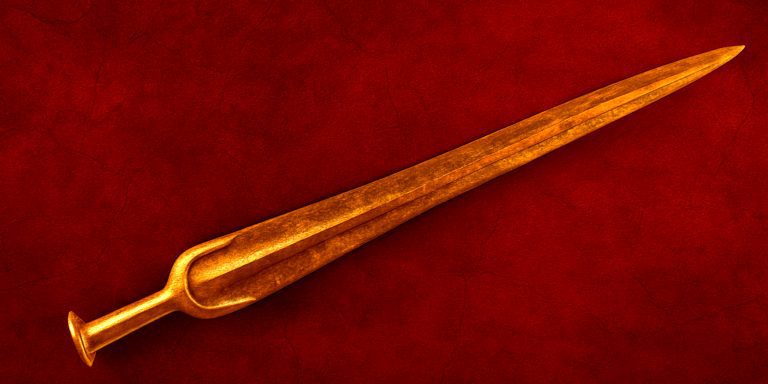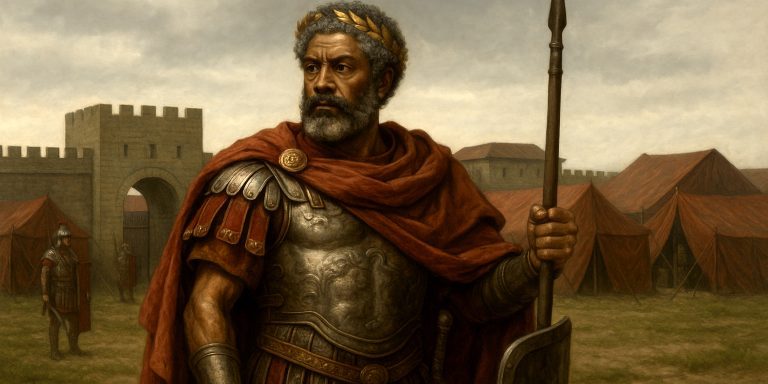
Weapons of the Border ReiversWhat the Reivers carried and why it suited their violent world
For nearly 300 years, the Anglo-Scottish border was a lawless frontier where survival hinged on violence, loyalty, and swift retaliation. At the heart of this volatile region were the Border Reivers, clan-based raiders who rode under moonlight to steal cattle, burn farms, and settle scores. Their weapons were not ornamental or ceremonial. These were brutal tools, honed through generations of skirmishes, ambushes, and running battles.
The Reivers needed arms that were fast, light, and lethal. Whether ambushing a rival clan, outpacing English wardens, or fighting off a night raid, their armoury reflected the grim realities of the Marches.
Swords and Daggers
Most Reivers carried a short sword or cutlass-style blade, not the long arming swords of knights. These blades were suited to quick strikes and close combat. Alongside them, they often carried a ballock dagger or dirk, tucked into the belt and used in ambushes or as a last resort.
Key traits:
- Length: Reiver swords were often 25–32 inches in blade length
- Style: Single-handed, broad-bladed, often locally made
- Daggers: Double-edged, with distinctive hilt shapes resembling male anatomy (hence ballock)
These weapons were effective indoors or in tight terrain where cavalry sabres would be unwieldy.
Pistols and Firearms
By the late 16th century, pistols had become part of the Reiver’s kit. These were early wheellock or snaphaunce firearms, expensive, slow to reload, but deadly at close range.
Carriage pistols were often holstered on horseback, used to fire once at close range before switching to blade or lance. Muskets were rare among Reivers, as they required more time to prepare and were too cumbersome for quick raids.
Notable feature:
The psychological impact. A pistol shot in the night could terrify a farmhouse into surrender without a fight.
Lances and Spears
While not as iconic as the sword or bonnet, the lance was an effective Reiver weapon. Many raids began with a sudden cavalry charge into a village or field, and a light lance allowed a rider to unseat enemies or skewer livestock mid-raid.
Types used:
- Light lance: Up to 7 feet long, suitable for horseback use
- Boar spear-style heads: Wide blades for tearing through padded jackets or horses
They were also useful for defence, allowing the Reiver to keep attackers at bay during a retreat.
Jack of Plate and Border Armour
While not strictly a weapon, the Reivers’ defensive gear was worth noting. The most common was the jack of plate, a sleeveless garment stuffed with small iron plates sewn between layers of canvas or leather.
Advantages:
- Light enough for fast riding
- Tough enough to resist arrows and light blades
- Often homemade or inherited
Some wealthier Reivers used mail shirts or breastplates taken from battlefields or purchased abroad. But for most, agility mattered more than full protection.
Clubs, Axes, and Improvised Weapons
Not every Reiver rode into battle with a polished blade. Many poor riders used tools as weapons, blackthorn clubs, short-handled axes, or flails. A farm implement could become a murder weapon when raiding cattle or settling a feud.
Border ballads and court records often mention axes being used to batter down doors or “staves” swung in moonlit fights.
The Reiver Arsenal at a Glance
| Weapon Type | Description | Common Use |
|---|---|---|
| Steel Bonnet | Iron helmet, domed, open-faced | Protection on horseback |
| Short Sword | One-handed, broad blade | Close combat |
| Dirk/Ballock Dagger | Double-edged thrusting knife | Last resort or ambush |
| Wheellock Pistol | Single-shot firearm | Surprise raids |
| Light Lance | Horseback spear | Cattle raiding, charges |
| Jack of Plate | Quilted armour with iron plates | Lightweight defence |
| Axe/Club | Tool-turned-weapon | Improvised or blunt force |
Sword Types Used by Border Reivers
The swords carried by Border Reivers were practical weapons, adapted for fast, close-range skirmishes on horseback and in cramped rural settings. Unlike the long, knightly blades of earlier periods, Reiver swords were shorter, sturdier, and built for real violence, not ceremony.
Typical Features:
- Blade Length: Usually 25 to 32 inches
- Blade Type: Straight, double-edged, relatively broad
- Hilt Style: Simple crossguard with either a round, lobed, or faceted pommel
- Grip: Often leather-wrapped with slight taper for one-handed control
- Sheath: Plain leather scabbards, sometimes slung across the back or saddle
Known Types and Styles:
1. Border Riding Sword
This term is often used by collectors and curators to describe the typical Reiver sword. It is not a formal classification like Oakeshott’s typology but denotes a regionally specific, no-frills design.
- Straight, double-edged blade
- Functional iron crossguard
- Common among both English and Scottish Reivers
- Some show local smith marks or rough forging techniques
2. Cut-and-Thrust Swords (16th century)
By the mid to late 1500s, many Reivers carried blades resembling continental cut-and-thrust swords.
- Tapered point for thrusting through jack of plate
- Still capable of strong cutting motion
- Lighter than medieval arming swords
- Could be imports or looted weapons from campaigns in France or the Low Countries
3. Ballock Hilt Swords
Occasionally, Reivers used swords with a hilt style similar to the ballock dagger—notably in Scottish Marches.
- Rounded lobes at the hilt base
- Often paired with a matching dagger
- Associated with Highland and Lowland fighting styles
4. Rehilted Bastard Swords
In some cases, older medieval swords were cut down or re-hilted into lighter blades.
- Shortened for speed and practicality
- Scavenged or inherited from family armouries
- Mixed features from 14th to 16th-century blades
Example in Museum Collections:
- A 16th-century Border Riding Sword is on display at the Tullie House Museum in Carlisle, with a 29-inch blade and a plain crossguard, likely forged locally.
- Several surviving examples of cut-and-thrust style swords attributed to Border use are housed in Dumfries Museum, with narrower blades and pierced side rings, suggesting occasional adoption of more elaborate hilts.
Where to See Reiver Weapons Today
Several museums across the border counties preserve original Reiver artefacts. Worth visiting:
- Tullie House Museum, Carlisle – notable collection of Border weapons and bonnets
- Dumfries Museum, Dumfries – jack of plate examples and local artefacts
- The Tower of London – broader context of 16th-century arms used by English troops
- National Museum of Scotland, Edinburgh – preserved daggers and wheellocks
The Seven Swords Takeaway
The Border Reivers were not professional soldiers. They were outlaws, farmers, and opportunists forced into violence by circumstance and survival. Their weapons reflect that reality: rough, adaptable, and designed for speed and intimidation. The steel bonnet was not just protection. It was a symbol of a way of life where vengeance was expected, not feared, and no man rode out unarmed.
Their legacy lives on, not just in border folklore, but in the weapons they left behind, tools of power in a land where the law held little sway.



